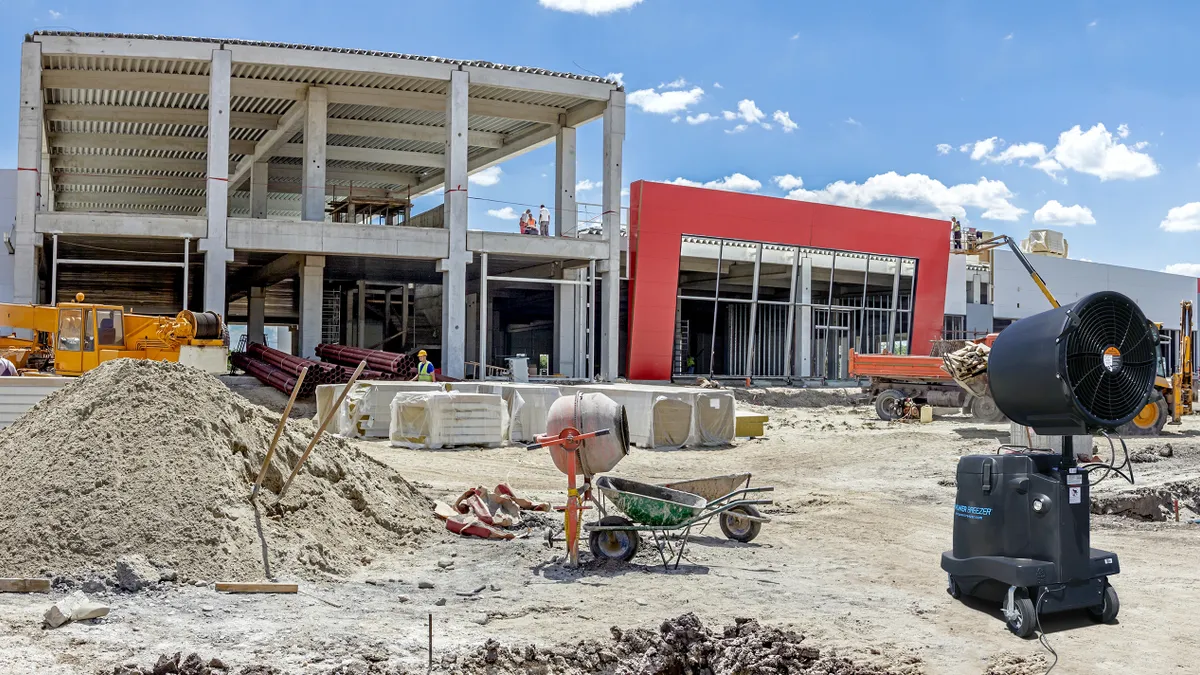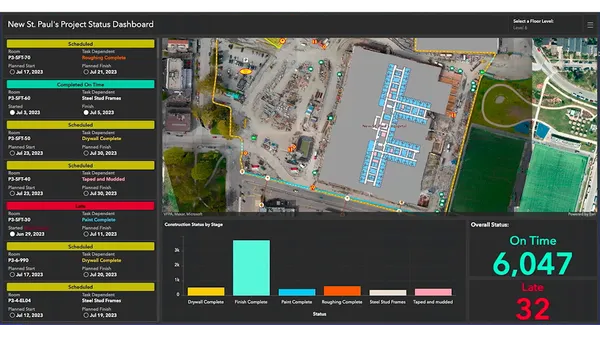One of the country’s top electrical contractors is employing a new solution — literally — to better protect its workers during the coronavirus pandemic. San Jose, California-based Rosendin Electric is using an industrial-grade cooling unit to blow mist made up of disinfectant and water over high-traffic areas on jobsites.
At the beginning of the coronavirus pandemic, items like hand sanitizer and bleach flew off the shelves as Americans stocked up. While cleaning products have, for the most part, returned to those shelves, the need for disinfecting hands and surfaces remains as the pandemic continues and even surges in some parts of the country.
Unwashed surfaces on construction sites can be a hidden health concern even when workers wear the appropriate personal protective equipment (PPE) and maintain social distancing.
Rosendin adopted the practice following the publication of a white paper from the Power Breezer company that found that the company’s industrial cooler was capable of using mist to disinfect large surfaces. Rosendin has employed it at two prefabrication warehouses in Oregon, and two data center jobsites in Oregon and Washington state, according to Josh Johnson, Rosendin’s West Coast corporate safety director.
Rosendin workers fill a 50-gallon tank on the back of the machine, which costs roughly $4,000, with water and cleaning chemicals, then use the machine’s oscillating function to distribute a disinfecting mist over sections of an empty jobsite at the end of the work day, Johnson said.
The solution is designed specifically to kill COVID-19 and other viruses, following EPA recommendations outlined in the white paper, which provides other guidance, such as not using the mist to spray people, and running weekly water-only mists to mitigate any corrosive effects from the chemicals.
The Power Breezer, originally intended to cool down large spaces during working hours, can spray the mist up to 60 feet, and takes about four hours to diffuse a whole tank. Rosendin rotates the Power Breezer to a different area onsite after each work day to disinfect the space.
As with any new tech or solution onsite, Johnson said, workers were a bit wary of the practice at first, but quickly got comfortable with the new machine, especially since it doesn’t operate at the same time workers do.
“It provides another tool in the toolbox to provide comfort for our workers in this uncertain time,” Johnson said.














